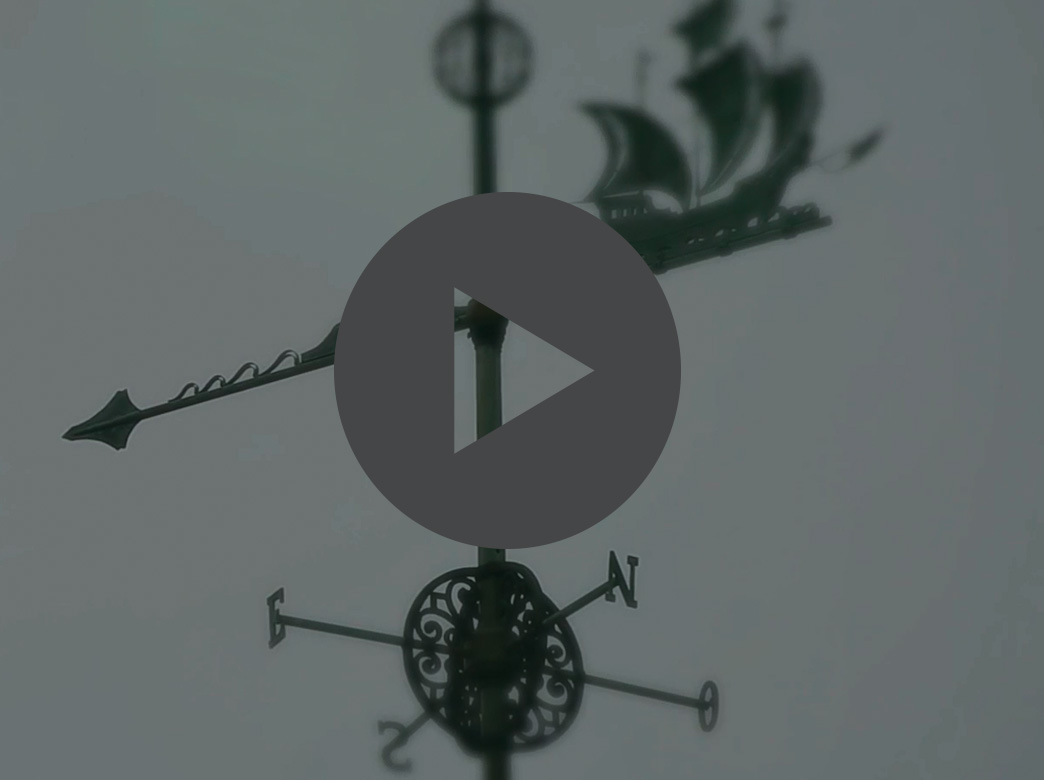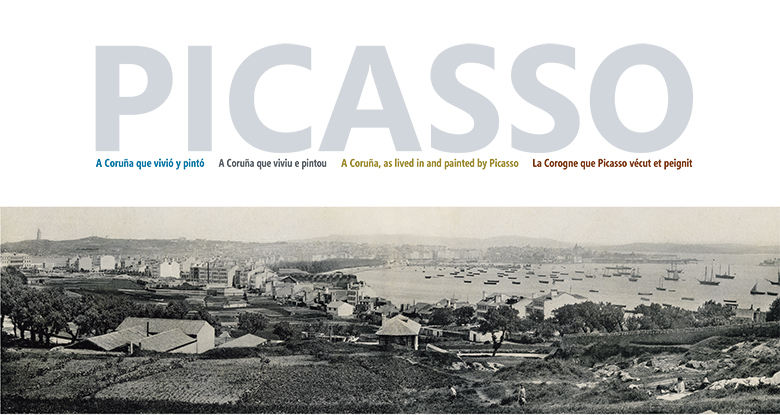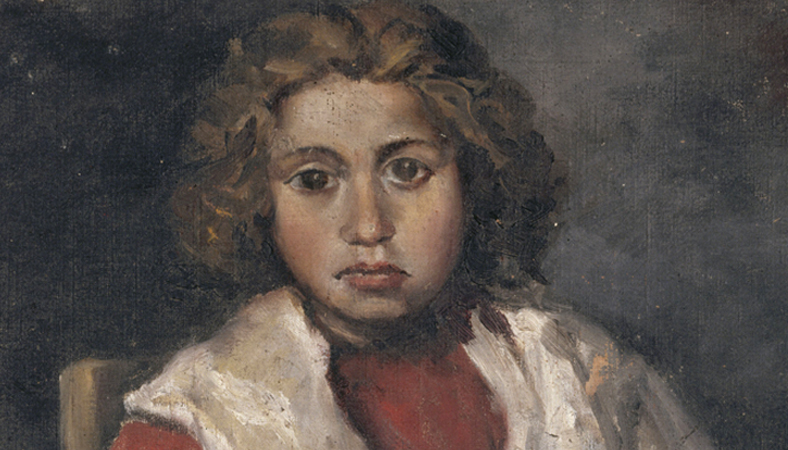
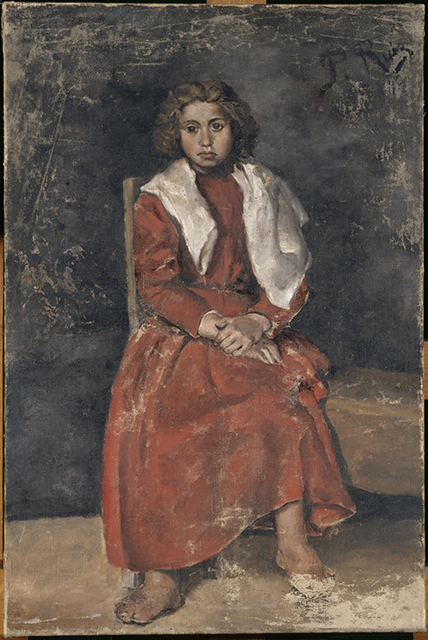
Picasso. La muchacha de los pies descalzos. Musée Picasso,París. © Sucesión Pablo Picasso, VEGAP, Madrid, 2015. © RMN-Grand Palais / Mathieu Rabeau / Adrien Didierjean
 |
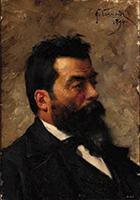 |
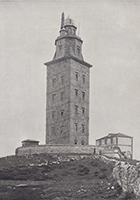 |
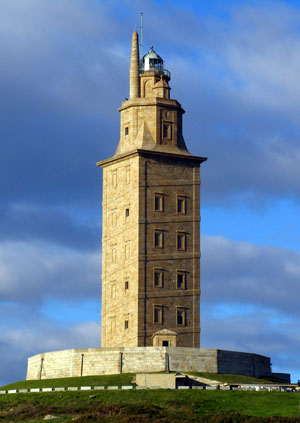 |
BIOGRAPHY |
HIS TEACHERS |
A CORUÑA 1891–1895 |
A CORUÑA TODAY |
A CORUÑA TODAY |
In Picasso's time A Coruña was already a thriving city and all through the 20th century it would experience spectacular growth. Without losing its identity, in the last several years it has increased its appeal and become one of the most interesting cities in northern Spain.
The galleries were preserved, against what Picasso came to fear, and A Coruña's unique architecture is still one of the main attractions of the city. Some of the best places to enjoy the views are near the area surrounding Lugo Square, where the artist used to live with his family, and the recently renovated inner harbour at the Marina, the perfect place to enjoy a nice walk or a bike ride by the sea, and María Pita Square, the heart of the city and the perfect starting point to go for a walk around the old town.
The Torre de Hércules, the candy tower drawn by Picasso, at that time was already the most remarkable monument of the city and was later declared a World Heritage Site in 2009. It is a landmark that every visitor should visit: it is close to the centre, it has wonderful views as well as an outdoor park, and it is the perfect place to practice sports. In short, an exceptional venue.
Riazor and Orzán beaches, Picasso's favourite, are still popular leisure places and are highly frequented by visitors and locals. Both places have been awarded the blue flag, as well as Matadero beach. The latter is also a spot that is deeply appreciated by surfers and body boarders, while the promenade is a popular training area for many amateur runners.
A Coruña offers countless possibilities for enjoying high-level competitions and practising sports. Sporting events such as soccer, hockey, open sea swimming or rowing competitions have a long standing tradition in the city, but recent international contests such as the marathon and walks are also increasing in recognition every year. More recent sporting events such as the triathlon see new competitors every day and display how passionate the locals are for their physical activities.
There is also a wide range of cultural events for culture lovers. A Coruña has always known how to enjoy performances, especially musical ones. The Orquesta Sinfónica de Galicia, whose headquarters are in the Palacio de la Ópera, offers an interesting programme that welcomes renowned vocal soloists and orchestra conductors. The opera season, the only one in Galicia, has a long tradition and gains spectators every year.
But not everything is classical music: jazz, pop, rock, folk, theatre, musical theatre, dance, children shows… are all part of the city's cultural programme. Buildings in the classical style, such as the magnificent Teatro Rosalía de Castro and the Teatro Colón, or multifunctional ones, such as the Palexco or Expocoruña, offer a wide range of shows every year.
In Picasso's time painters used to exhibit their works in shop windows; nowadays the city has art galleries, exhibition rooms and museums, whose interests go from archaeology or sacred art to installations and conceptual art.
Within the cultural framework, there are also the houses of artists' and writers' which have been turned into museums, such as Picasso's, Emilia Pardo Bazán's (the current headquarters for the Real Academia Galega), Casares Quiroga's or María Pita's. They allow a deeper understandng of the lives of some of these historically relevant figures by depicting the environment of their daily lives.
Both children and adults will find scientific museums irresistible (the Museo Nacional de Ciencia y Tecnología, Casa de las Ciencias, Domus, Acuarium Finisterrae). They are valuable resources for educational leisure where fun and learning go hand in hand. "Not touching is forbidden" is the common slogan encouraging interaction and personal experience.
In an open city like A Coruña, where people are friendly and where wandering around is a leisure activity, the ever dynamic local commerce, hotels and catering services encourage a lively atmosphere in the city centre by offering countless irresistible options. Renowned business that are a benchmark nationwide and even at the international level share the area with small family businesses, some of which are over a hundred years old, and some of which are just getting started. Together they make up the soul of this city, which vividly beats day and night.
Gastronomy is a rising attraction and worth paying attention to. Picasso used to love barnacles; he first tried them in A Coruña, but the local cuisine goes beyond seafood. Besides countless tapas bars, in both the traditional and creative sense, the number of renowned restaurants has increased because of the quality of the local products and their style.
On one occasion, Picasso defined A Coruña as "the most enjoyable city in the world". Maybe it was an exaggeration, but the truth is that the city has a variety of attractions, what are you waiting for?
The galleries were preserved, against what Picasso came to fear, and A Coruña's unique architecture is still one of the main attractions of the city. Some of the best places to enjoy the views are near the area surrounding Lugo Square, where the artist used to live with his family, and the recently renovated inner harbour at the Marina, the perfect place to enjoy a nice walk or a bike ride by the sea, and María Pita Square, the heart of the city and the perfect starting point to go for a walk around the old town.
The Torre de Hércules, the candy tower drawn by Picasso, at that time was already the most remarkable monument of the city and was later declared a World Heritage Site in 2009. It is a landmark that every visitor should visit: it is close to the centre, it has wonderful views as well as an outdoor park, and it is the perfect place to practice sports. In short, an exceptional venue.
Riazor and Orzán beaches, Picasso's favourite, are still popular leisure places and are highly frequented by visitors and locals. Both places have been awarded the blue flag, as well as Matadero beach. The latter is also a spot that is deeply appreciated by surfers and body boarders, while the promenade is a popular training area for many amateur runners.
A Coruña offers countless possibilities for enjoying high-level competitions and practising sports. Sporting events such as soccer, hockey, open sea swimming or rowing competitions have a long standing tradition in the city, but recent international contests such as the marathon and walks are also increasing in recognition every year. More recent sporting events such as the triathlon see new competitors every day and display how passionate the locals are for their physical activities.
There is also a wide range of cultural events for culture lovers. A Coruña has always known how to enjoy performances, especially musical ones. The Orquesta Sinfónica de Galicia, whose headquarters are in the Palacio de la Ópera, offers an interesting programme that welcomes renowned vocal soloists and orchestra conductors. The opera season, the only one in Galicia, has a long tradition and gains spectators every year.
But not everything is classical music: jazz, pop, rock, folk, theatre, musical theatre, dance, children shows… are all part of the city's cultural programme. Buildings in the classical style, such as the magnificent Teatro Rosalía de Castro and the Teatro Colón, or multifunctional ones, such as the Palexco or Expocoruña, offer a wide range of shows every year.
In Picasso's time painters used to exhibit their works in shop windows; nowadays the city has art galleries, exhibition rooms and museums, whose interests go from archaeology or sacred art to installations and conceptual art.
Within the cultural framework, there are also the houses of artists' and writers' which have been turned into museums, such as Picasso's, Emilia Pardo Bazán's (the current headquarters for the Real Academia Galega), Casares Quiroga's or María Pita's. They allow a deeper understandng of the lives of some of these historically relevant figures by depicting the environment of their daily lives.
Both children and adults will find scientific museums irresistible (the Museo Nacional de Ciencia y Tecnología, Casa de las Ciencias, Domus, Acuarium Finisterrae). They are valuable resources for educational leisure where fun and learning go hand in hand. "Not touching is forbidden" is the common slogan encouraging interaction and personal experience.
In an open city like A Coruña, where people are friendly and where wandering around is a leisure activity, the ever dynamic local commerce, hotels and catering services encourage a lively atmosphere in the city centre by offering countless irresistible options. Renowned business that are a benchmark nationwide and even at the international level share the area with small family businesses, some of which are over a hundred years old, and some of which are just getting started. Together they make up the soul of this city, which vividly beats day and night.
Gastronomy is a rising attraction and worth paying attention to. Picasso used to love barnacles; he first tried them in A Coruña, but the local cuisine goes beyond seafood. Besides countless tapas bars, in both the traditional and creative sense, the number of renowned restaurants has increased because of the quality of the local products and their style.
On one occasion, Picasso defined A Coruña as "the most enjoyable city in the world". Maybe it was an exaggeration, but the truth is that the city has a variety of attractions, what are you waiting for?























 >
>


